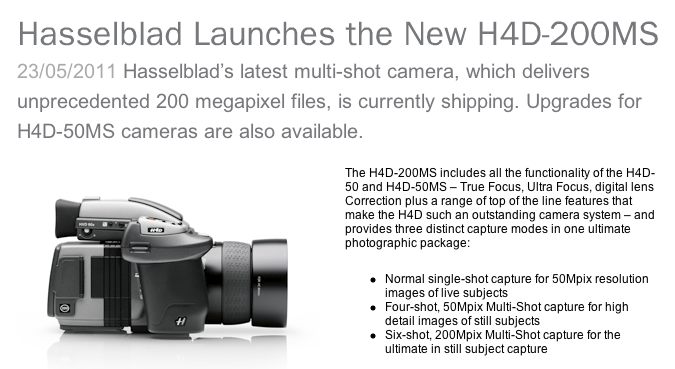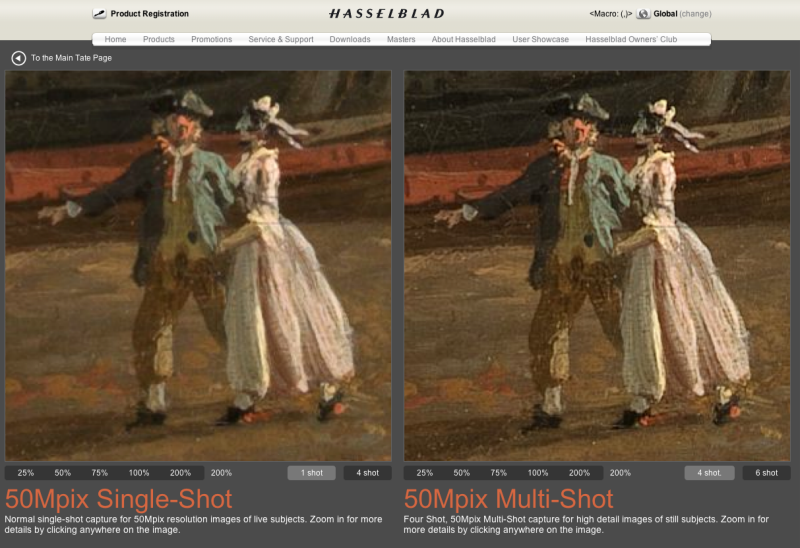Innovation from Hasselblad.
The newly introduced Hasselblad H4D-200MS digital camera body is not for everyone at almost $50,000. However, for the working professional who needs to make barn-sized prints for a living, the price of entry is easily recovered.

Click the picture for more.
The body is a modified variant of the existing H4D-50 which makes six consecutive pictures of a subject, shifting the sensor in between, thus exposing all photosites (digital receptors) to equal amounts of light. The camera then merges these six images into a 200 megapixel whole. Commendably, the regular camera ($31,000) can be upgraded by the maker. The loss of some 100 megapixels (6 x 50 = 300) presumably arises from the process deleting duplicated data points.
A 200 megapixel file size (200 megabytes) is nothing to laugh about. You will need high speed data processing power to manipulate such files and a lot of storage to back them up. Further, the technology can only be used with stationary subjects, but for the contemplated billboard-sized results, subjects will likely include product advertisements, food shots for the sides of trucks and so on. These are largely static so that hardly seems a limitation.
Fuji, the owner of Hasselblad, deserves congratulations on this innovative camera.
London’s Tate Gallery uses this technology, and you can see more by clicking the picture below. The difference is readily visible in the small reproduction below, but on their site you can really zoom in to see what this is all about.

Click the picture to go to Hasselblad’s comparison page.